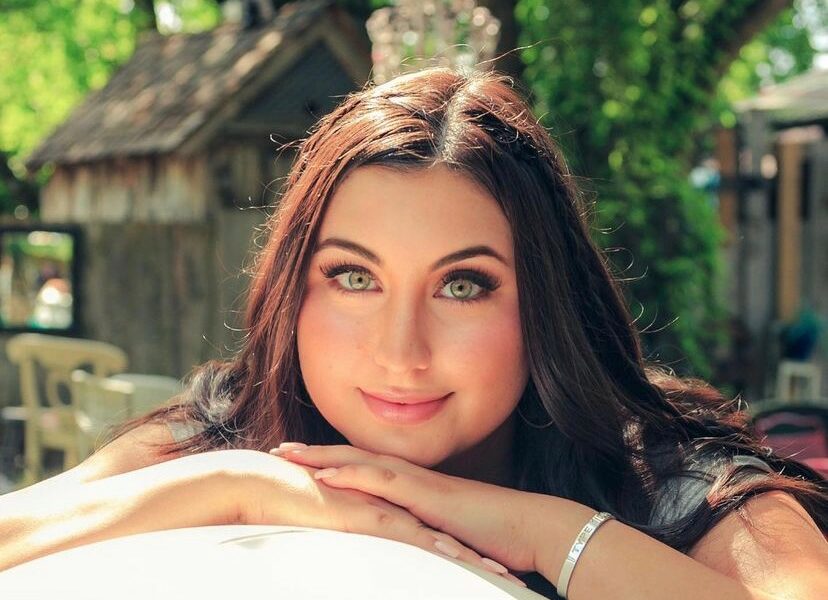

Today we’d like to introduce you to Sophia Livolsi.
Hi Sophia, thanks for sharing your story with us. To start, maybe you can tell our readers some of your backstories.
When I was 13 years old, I was suddenly diagnosed with type 1 diabetes. I had all of the classic symptoms – I rapidly lost a lot of weight (around 20 pounds), ate and drank way more than usual, was extremely fatigued, etc. My parents brought me to our family doctor to see what was going on, and as soon as they checked my blood sugar levels, I headed straight to the hospital for a 3 day stay to be treated for Diabetic Ketoacidosis and to learn all about how to manage this life-long condition.
One of the first things I realized about type 1 diabetes is that society as a whole has a very misconstrued understanding of what the condition actually is. This is due to the stereotypical misrepresentation of diabetes in the mainstream media: some examples include the character “Diabeto” in Family Guy or a lot of the memes you see circulating on social media about how junk food or sugar causes diabetes. Examples of a few facts about type 1 diabetes that often surprise people:
– Type 1 diabetes isn’t for “old” people. You can be diagnosed at any age, but the vast majority are actually diagnosed in adolescence. This is why it used to be called Juvenile Diabetes.
– Type 1 diabetes is not caused from being “fat.” In fact, a symptom of untreated type 1 diabetes is extreme weight loss.
– Type 1 diabetes cannot be cured from diet and exercise. There is no cure for this condition, but insulin is a treatment.
– People with type 1 diabetes can eat sugar or “junk” food. We just have to monitor our blood sugar levels and administer insulin.
While I can take a joke and love humor (my blog’s name is a pun for goodness sakes), these incorrect stereotypes have become so ingrained in our society that our peers and medical professionals alike are affected by them. I remember during my first day back at school after my diagnosis, a friend asked why I was absent and when I told them about my type 1 diabetes/hospital stay, they responded with “oh… but I didn’t think you were fat?” Comments and assumptions like this, along with “just cure it by being healthier,” “you really shouldn’t be eating that,” and other patient-blaming statements can be harmful to a person’s self-image, especially as a young person. Furthermore, on the medical professional side of things, I have had endocrinologists (diabetes specialists) not accurately understand how to treat me due to the deep-rooted misinformation surrounding diabetes that is so present in our society.
Before my diagnosis, I was a pretty shy kid. However, facing comments and assumptions like this encouraged me to learn how to stand up for myself in a firm, yet respectful and kind way. Most people do not mean to be hurtful and make statements out of concern. Again, they only know the incorrect information that they see in the mainstream media. I began viewing these stereotypical comments and questions as an opportunity to kindly educate others on the facts of type 1 diabetes.
A few months after my diagnosis, I ended up competing in my first pageant. With my newfound voice and advocacy mission for type 1 diabetes, I competed with that as my platform. I ended up taking the National American Miss Texas Spokesmodel title. The spokesmodel title showcases skills in public speaking and advocacy. Throughout middle school and high school, I went on to bring awareness to type 1 diabetes at multiple other state pageants and even the National pageant in Hollywood. I attended modeling school during my junior year of high school, where I continued to advocate for type 1 diabetes in a very image-conscious space such as the modeling world.
Fast-forward to my freshman year of college, I felt it on my heart to start a blog. It was definitely a leap of faith for me, as I’m not the most creative person nor the best writer, but I decided to release “What The Prick” in Fall of 2018. It was my hope to educate people on type 1 diabetes on a larger platform, share the stories of other type 1 diabetics through my “spotlight” page, share tips and tricks I’ve learned along the way, advocate for affordable insulin, and build a community of people to support each other while going through similar situations. Although it started as a passion project and hobby, What The Prick quickly blew up. I do my best to share my authentic life, from funny photos of myself to hardships I may be going through in life, and I have been so blessed to build a genuine bond with my followers and friends. What The Prick now has over 10,000 followers on Instagram and several thousand website views. I also partner with large brands, such as FreeStyle Diabetes (a subsidiary of Abbott Global) for partnerships through my micro-influential platform. I am excited to see how What The Prick continues to grow and am so thankful for my community.
We all face challenges, but looking back would you describe it as a relatively smooth road?
Learning to correct people when presented with stereotypical comments and questions was difficult. Living with type 1 diabetes in and of itself is difficult, too – I inject myself with insulin at least 4 times a day, wear a medical device (a FreeStyle Libre 2), prick my fingers to check my blood sugar levels, etc.
Alright, so let’s switch gears a bit and talk business. What should we know about your work?
What sets me apart from others is just how “niche” my platform is – out of all of the people with diabetes, only 5% have type 1 diabetes. This combined with my authentic blogging style allows me to build genuine bonds with my followers, and I have made life-long friends through my blog! I most frequently share content on my blog Instagram @what.the,prick and also share articles and spotlight stories on my website.
Using my platforms to fight for affordable insulin is a huge aspect of my work. From pageantry, to Instagram; the price gouging of insulin is an issue that I strive to tackle through my blog and Instagram page.
What was your favorite childhood memory?
I am very close with my family, so the times I spent with my mom, dad, and brother are my fondest memories!
Contact Info:
- Email: sophia@whattheprick.com
- Website: www.whattheprick.com
- Instagram: @what.the.prick






Image Credits
Rudy B Photography










